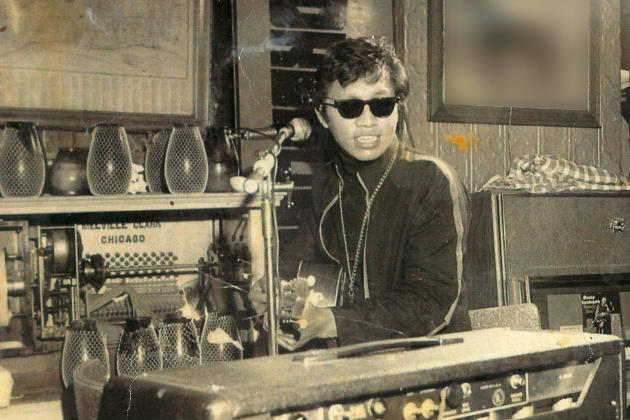Sixto Rodriguez, the Detroit singer and songwriter, died on August 8, 2023. He was 81 years of age. What follows is a short essay I wrote about him in July, 2012, the day after seeing the preview of the documentary film about his life entitled “Searching for Sugar Man.” The article was never published. I did it for my friends who are interested in this kind of stuff. Since I wrote it, Rodriguez and the film have enjoyed a much larger audience, especially here. I have not changed the piece at all. It’s how I felt about it all back then. I still feel the same way. – 08/10/23
Last night, Bill Carney and I saw a preview showing of a soon-to-be released film called
“Searching for Sugar Man.” The film tells the story of the one-named Rodriguez, a Mexican-American Detroit folk singer who performed and recorded in the early 1970s. His songs were likened to Bob Dylan material. In essence, this was protest music, and it was good protest music too. The comparison to Dylan is not disingenuous.
Initially performing around long-gone bars and clubs in Detroit, Rodriguez attracted the attention of some industry big shots including a couple of Motown producers. He made two records “Cold Fact” and “Coming from Reality.” “Sugar Man” is the title of one of these recorded tracks. The albums went nowhere in the States. He was signed to a subsidiary label of Tamla Motown that went belly-up two weeks after his second record was released and that was it for him. He never received any radio play here and, for all intents and purposes, Rodriguez’s musical career was abruptly and sadly over. The demands of subsistence forced him to find other ways to stay alive.
Rodriguez continued to live a hard scrabble life in Detroit, with occasional factory, construction, and renovation jobs. His economic existence was marginal, bordering on that of a homeless person.
Meanwhile unbeknownst to him, his records have become hugely popular in South Africa amongst young whites looking for alternatives. In this kind of Samizdat community, the music was bootlegged and distributed. He was fast becoming the Elvis Presley of the day there, a household name. South African record companies finally released the two albums and the American executive of the out-of-business record label here received hefty amounts of money from the royalties. Rodriguez had no idea about any of this. He apparently was also popular in Australia and Sri Lanka.
Mystery surrounds this character and one of the legends in South Africa was that Rodriguez had committed suicide on stage. A couple of South African music types and journalists tried to solve the riddle of how Rodriguez died, since there was virtually no information about him other than the sparse credits on the records. They resorted to following leads from lines in the lyrics for clues. Years later, through a process of trial and error and after almost giving up, they finally unearthed the mystery. To their amazement, Rodriguez was alive and kicking in Detroit, living in a tough neighborhood called “Mexican Town.”
The South Africans then convinced him to tour the country and in 1998 he did so.
He was given a rock star’s welcome and played to auditoriums crammed with people who knew all the words to his songs. There were even fans with Rodriguez tattoos at these shows. He was naturally blown away by all of this, as were his contemporaries and co-workers in Detroit who knew nothing of his musical past. Many of them found it impossible to believe him when he would say something like “I won’t be at work next week, I have to play a concert in South Africa.” During the film when his ship finally comes in, it’s virtually impossible not to feel genuinely happy for him. He’s subsequently been back to SA at least half a dozen times.
This is an amazing story because it’s a parallel but separate universe tale. There is the world of Detroit, with all of its hardship and misery and this guy, Rodriguez, living this edgy life. And then there is Cape Town, with a different kind of harshness to it and the predominantly white South African diehard audience coming out of the cultural isolation imposed upon all South Africans by the old regime and by the sanctions. For whatever reasons, Rodriguez had become their Woody Guthrie. And then there are these few fanatical followers trying to find what happened to a dead man, adding to the enigma. The film eventually connects these odd worlds and the main characters. The Rodriguez riddle is solved.
Bill and I saw the movie at the NY Times Film Club, an institution that sounds snooty and it is. Bill was born and grew up in inner city Detroit, me in Durban South Africa, so it made all sorts of sense for us to go together. After the showing, the guy who made the movie and Rodriguez were interviewed on stage by Jon Pareles, the NY Times music critic. I’ve been reading Pareles’ stuff for decades, not necessarily by choice. I can now attest that he is as obnoxious in person as he is in print. I wouldn’t be surprised to find out that he lives in Park Slope.
But Rodriguez and the movie maker were terrific. Throughout the film, Rodriguez comes across as someone who doesn’t care about money and success because he has never had any of either. He blossoms with that sincere form of working class honesty. He is proud of what he has done in an unassuming way. His daughters are the same way. They grew up dirt poor. One claimed that throughout her childhood she remembered living in twenty-six different residences in downtown Detroit. But Rodriguez tried his best with them, took them to the libraries and the art museums and he taught them to appreciate beautiful and profound things and to use knowledge as a weapon for the good fight. There should be more human beings like these ones (take note Jon Pareles).
The film director described the story and the music as nuggets that demanded to be mined. He’s right about that and for our sakes I am glad he dug deep and told it all.
Of course, none of this entered onto my radar screen when I lived in SA. My sister Bronnie remembers the records, and I recognized one during the film, but I always thought it was by Jose Feliciano — so much for having my finger on the pulse.
I really recommend this film. It’s coming up for general viewing towards the end of the month and will probably show at a few of the art movie theaters. I have the music and I can pass it on. It’s all good.
July 19, 2012


